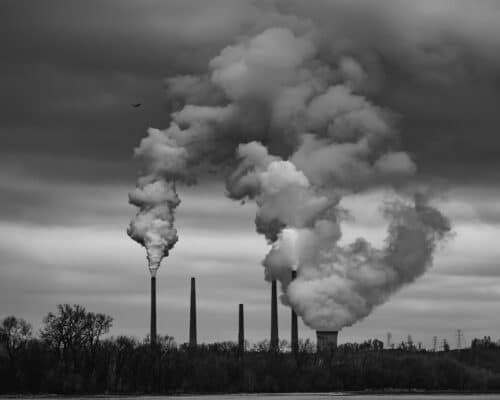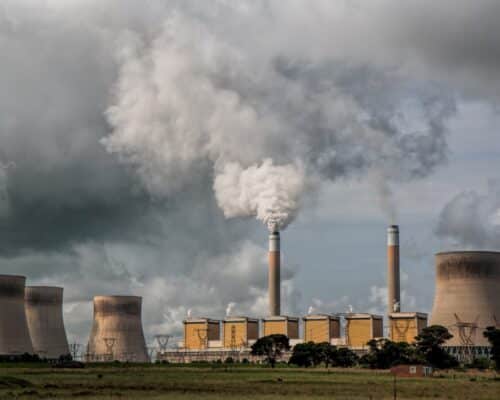Offshore Wind Power – Key to Japan’s 2050 Net-Zero Goal
09 March 2021 – by Viktor Tachev
In October 2020, Japan’s Prime Minister announced a net-zero goal by 2050. Considering the sluggish progress in its renewable energy development, the country has much work to do. However, thanks to the enormous offshore wind power potential, Japan has an ace up its sleeve that can speed up its march towards a sustainable future.
Japan’s Offshore Wind Power Potential
The country’s topographical characteristics enable its great potential for wind power generation. The archipelago consists of 6,850 islands. Over 70% of Japan’s territory is a mountainous region. Those two factors explain why wind power has a much higher potential than all other renewable energy sources in the country.
Japan’s offshore wind power potential exceeds the country’s electricity demand by 8.1 times. According to Jin Kato, president of the Japan Wind Power Association (JWPA), the country can realistically aim to build large-scale offshore wind farms, including 128 GW potential for fixed-bottom and 424 GW for floating.

In fact, in terms of offshore wind power potential, the country is within the top 3, alongside the USA and the EU.
These figures alone don’t tell the whole picture. To get a better understanding, we should dive into the concept of offshore wind energy generation. For starters, it is the only variable baseload power generation technology. Due to more effective wind turbines and other technological improvements, new offshore wind projects have capacity factors of 40% – 50%.
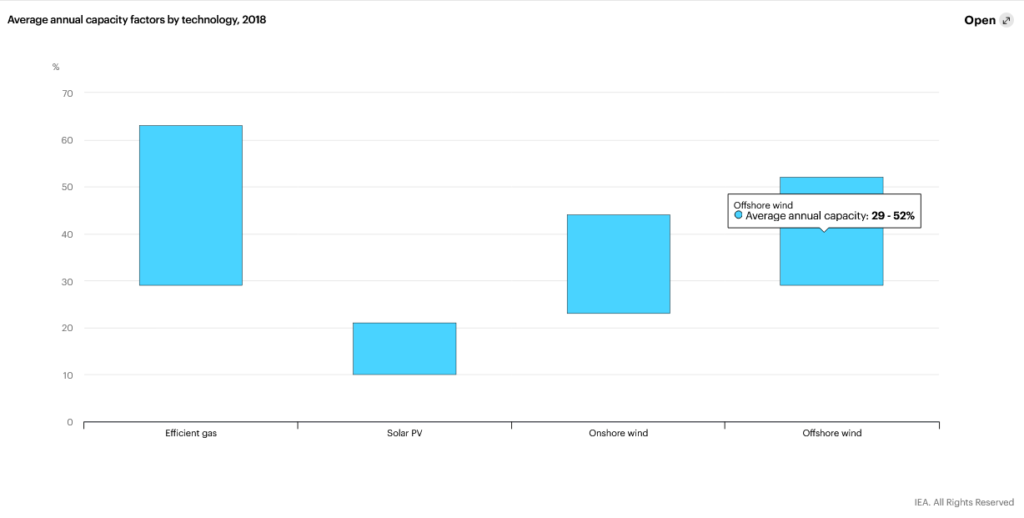
Offshore wind power generation matches the capacity of conventional energy sources like efficient gas- and coal-fired power plants. It also has double the capacity of solar PV.
The Current State of Wind Power Generation in Japan
Despite the immense potential, wind power generation (offshore and onshore combined) holds the lowest share in the total energy mix in Japan. Currently, the country generates just 20 megawatts through offshore wind farms. Japan isn’t even among the top 10 leading generators of offshore wind power globally. Besides, the country has the lowest self-sufficiency rate among OECD’s (Organization for Economic Co-operation and Development) ten largest member nations.
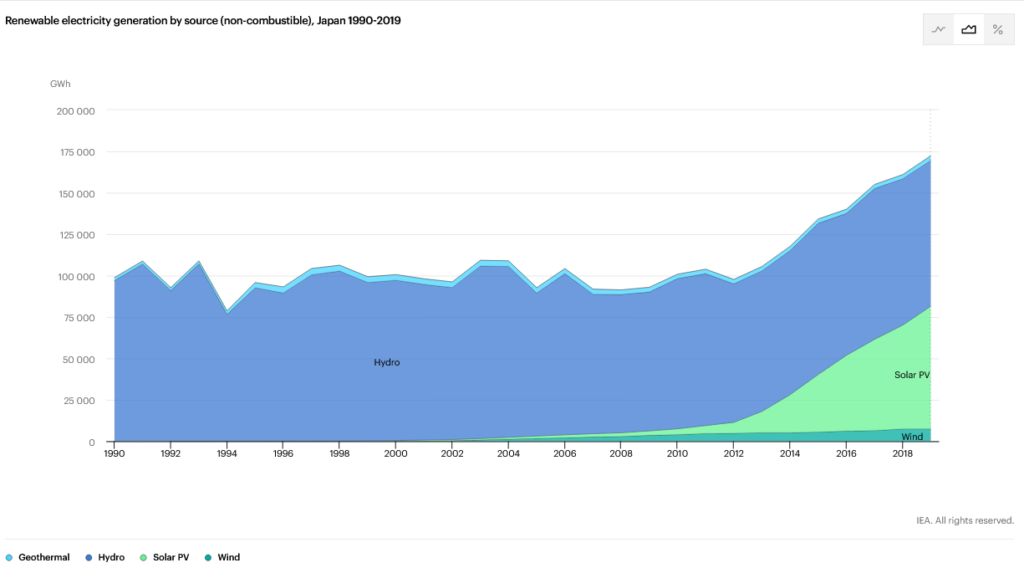
The Government plans to increase the capacity to 10 gigawatts by 2030 and between 30 and 45 gigawatts by 2040. If Japan fulfils these ambitious goals, it will become the third-largest generator of such energy.
According to Shigehito Nakamura, managing director at the JWPA, the country can even aim for a realistic capacity of 90 gigawatts by 2050.
Japan’s Plans to Capitalize on its Potential
The country realizes that its vast offshore wind potential can be its X-factor. Furthermore, it will help reduce emissions by 26% (or more) by 2030 and achieve carbon neutrality by 2050. As a result, related ministries have already started reviewing their energy policies to stay in-line with the net-zero roadmap.
Aims to attract foreign investment into local offshore wind farms
The introduction of the Offshore Wind Promotion Act in 2019 started the country’s efforts to provide continuous support for the offshore wind power industry. The end goal is to attract foreign manufacturers of wind turbines and blades to build local supply chains for offshore wind farms. To achieve that, the Government plans a series of measures. These include lowering the barriers for market entry by new operators, assistance with geological researches and surveys, wind movements and seabeds analysis, improvements on grid network, and more.
Japan’s efforts to draw big names into the local sector are already coming to fruition. There are several bids for planned auctions in the pipeline already. A joint-effort by RWE and Kyushu Electric Power in 2020 kicked-off the country’s first large commercial wind farm development project off the coast of Yurihonjo City in Akita, northern Japan. Orsted, the world’s largest offshore wind power developer, announced plans for a project alongside the Tokyo Electric Power Company near Choshi, Chiba.
The country also plans to lower the cost of offshore wind power generation. The goal is for it to become cheaper than thermal power between 2030 and 2035. If the efforts are successful, it could fall to 8 yen (USD $0.076) per kilowatt-hour (kWh) in the early 2030s. This will bring the cost closer to the current one of 5-6 yen/kWh in Europe.
Offshore wind power as a way to minimize energy dependency
According to the Ministry of Economy, Trade and Industry Agency for Natural Resources and Energy, the country is heavily dependent on fossil fuels. Considering that Japan relies on almost 96% foreign sources to fulfil its energy consumption needs, offshore wind power is a much-needed solution.
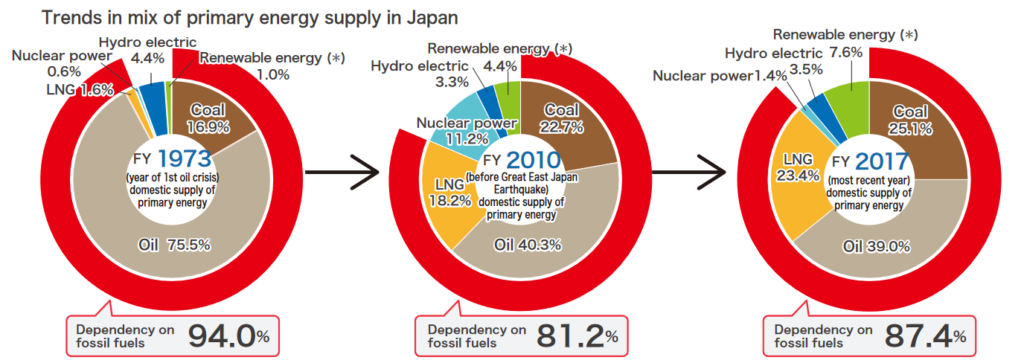
Furthermore, a 1 GW offshore wind farm can reduce the annual fuel import bill by more than USD $300 million, according to McKinsey.
In a nutshell, Japan’s offshore wind potential, alongside the efforts on the corporate (learn more here) and the national stage, paint a bright future.

by Viktor Tachev
Viktor has years of experience in financial markets and energy finance, working as a marketing consultant and content creator for leading institutions, NGOs, and tech startups. He is a regular contributor to knowledge hubs and magazines, tackling the latest trends in sustainability and green energy.
Read more
